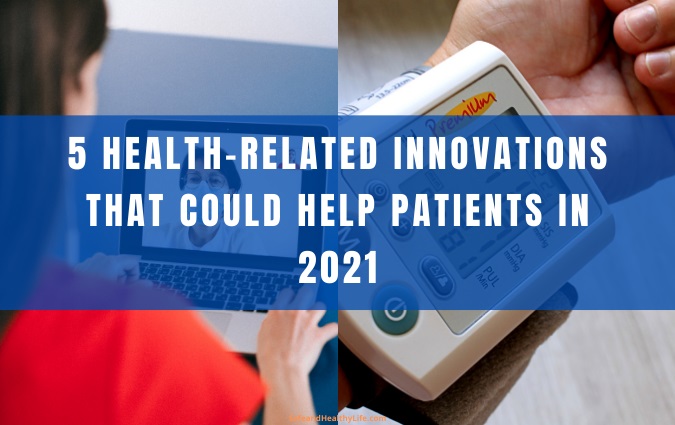
2021 is almost upon us, and some individuals feel excited about what the new year will bring.
New years always bring promise, and since 2020 was so difficult for so many people, it seems likely that the 2021 reset is just what the doctor ordered.
With that in mind, we’ll take some time to look at a few health-related innovations that are either outright now or might be out sometime in 2021. These innovations will help patients, but they will also make medical professionals’ lives easier.
1. Automated Medical Billing Solutions
Several companies now have comprehensive, all-inclusive, automated medical billing solutions. Current health trends indicate that various medical facilities love this sort of service once they implement it. You might see this sort of service at:
- A hospital
- A clinic
- An urgent care facility
Any of these facilities can get a medical billing and collection cycle package. They generally include things like scheduling, registration, insurance verification, and medical record access. Most of them also have claim submission and billing, patient pay collection, and detailed payment review capabilities.
Essentially, this automates a lot of what a receptionist would once have to do. These portals or software suites save medical facilities money and time, but they also make the patient journey easier.
Patients can communicate with their care providers so much easier, not to mention look at test results, pay bills, get prescription refills, etc.
2. Telehealth Conferencing
The pandemic this year has killed many, but it has also forced innovation in several niches. The medical field is one of those.
Telehealth apps existed before 2020, but this year their use has exploded like never before. In the past, a doctor’s office might have used them, but now, every single medical entity knows about them and has that option for its patients. That is because:
- They’re away for a doctor and patient to speak without ever meeting face to face
- They make it easy for a patient to see a doctor when they are too sick to leave the house
If someone has an immunocompromised condition, they can talk to their doctor via their smartphone, and they never have to worry about driving or using public transportation. They can tell their doctor about their symptoms and get advice, and they never have to leave their home or even get out of their pajamas.
3. Drone-Delivered Medical Supplies
This seems truly space-age, but it’s coming. Drones should deliver medical supplies to patients very soon.
Again, if you have a patient with an immunocompromised condition, this is a way they can get their meds without leaving the house. Soon, you might see the sky full of drones carrying pills and other vital medical supplies.
The only issue may turn out to be the need for some new air traffic rules, so these devices don’t keep running into each other.
4. Smart Device Monitoring
Tons of smart wearables like Fitbits are out there right now, and people are using them for all kinds of things, like counting their steps and tracking their blood pressure. Expect even more people to wear them in 2021 and beyond.
That’s because these devices can detect when someone is having a cardiac episode or their blood sugar drops to an unacceptable level. Individuals with all kinds of medical conditions can monitor themselves to make sure they’re okay, and if they’re not, they’ll know about it immediately.
It’s not hyperbole to say that these devices should save many lives as time passes. The person wearing them will know to call for help if they’re in distress.
5. A Stem-Cell Diabetes Cure
Incredible as it sounds, medical science is working on a potential stem-cell diabetes cure. It’s unclear whether 2021 is the year when they might breakthrough, but all the signs are positive at this point.
If someone has diabetes, they can currently expect to eat carefully, monitor their blood sugar levels at all times, and receive painful insulin injections. That might soon change, as doctors think they can use stem cells to create the replacement beta cells that produce insulin.
There’s a company that is working on a tiny implantable device. It can hold millions of replacement beta cells, and it will simply release them when the person needs them. They are doing animal tests right now, but they will probably move to human testing soon.
This means people with diabetes could live easier lives than ever before, and it will save a lot of misery.
About The Author:
Susan Melony is a freelance writer, digital marketer, and entrepreneur based in Kansas City. She often travels while working, and is passionate about the digital nomad lifestyle.




